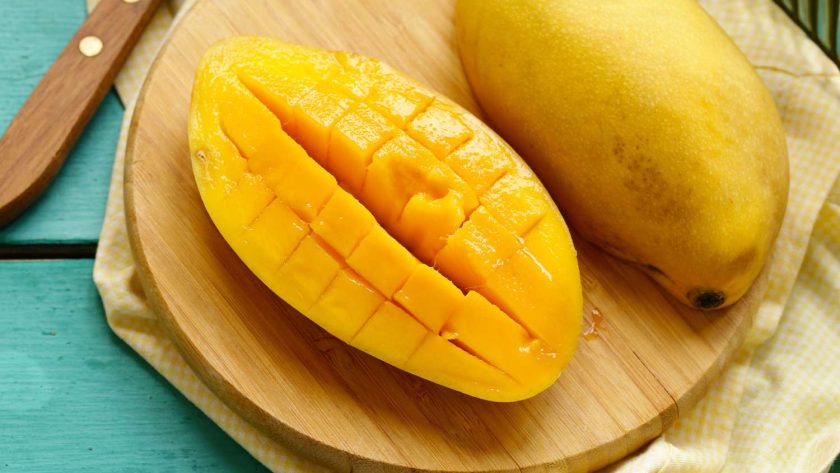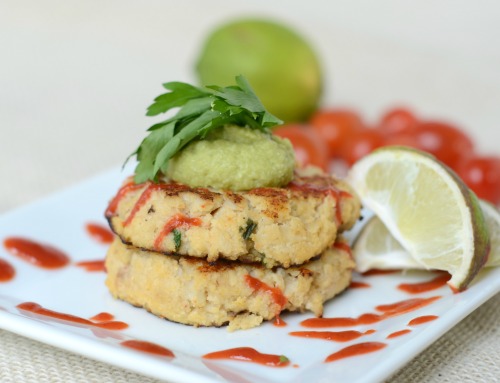What are the telltale signs that how to tell if a mango is ripe and ready how to tell if abe enjoyed?
Mangoes are delicious tropical fruits known for their juicy flesh and sweet flavor. Determining the ripeness of a mango is essential to ensure that it is at its peak taste and texture. While the color and feel of a mango can give you some indication of its ripeness, there are a few key factors to consider to determine whether a mango is ready to eat.
1. Color: The color of a mango can vary depending on the variety, but generally, it should have a vibrant, golden hue when ripe. A ripe mango may also have patches of red or orange on its skin. Avoid mangoes that are predominantly green, as they are likely unripe.
2. Texture: Gently squeeze the mango with your fingers to assess its ripeness. A ripe mango should yield slightly to pressure, similar to a ripe avocado or peach. Avoid mangoes that are too hard or too soft, as they may be underripe or overripe, respectively.
3. Smell: Take a whiff of the stem end of the mango. A ripe mango will have a sweet, fruity aroma. If there is no scent or the smell is unpleasant, the mango may not be ripe yet. Trust your nose to guide you towards a perfectly ripe mango.
4. Internal Signs: If you’re still unsure about the ripeness of a mango, cut it open. The flesh should be golden or orange, with no traces of green. It should be firm and juicy, with a sweet aroma. Avoid mangoes with mushy or fibrous flesh, as they are likely overripe or spoiled.
By considering these factors, you can confidently determine the ripeness of a mango and enjoy its succulent, tropical flavor to the fullest. So next time you’re at the grocery store or farmers market, use these tips to pick the perfect mango for your culinary adventures!
Choosing the Perfect Mango
When it comes to selecting the perfect mango, there are a few key things to look for. By taking note of the fruit’s appearance and fragrance, you’ll be able to determine its ripeness and quality. Follow these tips to ensure you choose the most delicious mangoes:
1. Size and Color
The size and color of a mango can indicate its ripeness. Generally, ripe mangoes have a good weight and are slightly bigger. Avoid choosing mangoes that are too small, as they may not have developed their full flavor. As for color, different mango varieties have different skin colors when ripe. However, a good indicator is a mango that has a vibrant, rich color. Avoid mangoes that have a dull or greenish hue.
2. Texture
A mango’s texture is another important aspect to consider. Ripe mangoes should have a slight give when gently pressed, indicating that they are soft and ready to eat. Avoid mangoes that feel too firm, as they are likely unripe and lack sweetness. At the same time, avoid mangoes that are too mushy or have bruises, as they may be overripe or spoiled.
To further assess the texture, you can also check for any wrinkling or shriveling on the mango’s skin. While slight wrinkling is normal, excessive wrinkling may indicate that the fruit is overripe.
In addition to these physical attributes, it’s also important to rely on your sense of smell when choosing a mango. Ripe mangoes have a sweet, fruity aroma that you can detect from the stem end of the fruit. If the mango has a strong, pleasant smell, it’s a good sign that it’s ripe and ready to be enjoyed.
Remember that mangoes continue to ripen after they are picked, so if you can’t find perfectly ripe mangoes at the store, you can allow them to ripen at home for a day or two. To speed up the ripening process, you can place them in a paper bag at room temperature, away from direct sunlight.
By considering the size, color, texture, and fragrance of the mango, you’ll be able to choose the perfect fruit for your enjoyment. Whether you plan on eating it fresh or using it in a recipe, a ripe and delicious mango will elevate your culinary experience.
Checking the Color
One of the easiest ways to determine the ripeness of a mango is by checking its color. As the mango ripens, its skin changes color. The most common variety of mango, the Tommy Atkins, starts off green and gradually turns red, orange, or yellow as it ripens. Other varieties may have different color variations, such as the Keitt mango which remains green even when fully ripe.
To check the color of a mango, hold it up to the light and examine the skin. A ripe mango will have a vibrant, rich color. Avoid mangos with any green patches, as these indicate that the fruit is not fully ripe. Instead, look for mangos that are predominantly red, orange, or yellow, depending on the variety.
It’s important to note that the color alone is not always a foolproof indicator of ripeness. Some mangos may have a mostly red or yellow skin but are still underripe and not yet ready to eat. However, checking the color can give you a good initial idea of the mango’s ripeness and whether it’s worth further examination.
| Variety | Color when Ripe |
|---|---|
| Tommy Atkins | Red, Orange, or Yellow |
| Keitt | Green (even when ripe) |
Feeling the Texture
One of the most reliable ways to determine the ripeness of a mango is by feeling its texture. You can gently press on the mango with your fingers to assess how firm or soft it is.
When a mango is unripe, it will feel very firm and hard to the touch. It may even feel a bit like squeezing a rock. Unripe mangoes are not ideal for immediate consumption as they can be very tart and lack the sweet and juicy flavor that ripe mangoes have.
As a mango starts to ripen, it will become slightly softer to the touch. When you press on it, there should be a little give and the mango should yield slightly. It should still feel somewhat firm, but not rock hard. At this stage, the mango is considered to be semi-ripe and it can be quite enjoyable to eat, especially if you prefer a slightly tangy flavor.
A fully ripened mango will feel soft to the touch, almost like pressing into a ripe avocado or peach. When you press on it, there should be a significant give and the mango should feel quite yielding. A ripe mango will also have a sweet fragrance emanating from it. This is when it is at its peak for consumption and will offer the best flavor and juiciness.
Signs of Overripe and Spoiled Mangoes
It’s important to note that there is a fine line between a perfectly ripe mango and an overripe one. As a mango becomes overripe, it will feel excessively soft and mushy to the touch. The flesh might start to show signs of browning or blackening, and the aroma might become overly sweet or fermented.
If a mango feels excessively squishy or has any signs of mold or rot, it is best to discard it, as it may be spoiled. Overripe and spoiled mangoes may have an unpleasant taste and texture, and consuming them could lead to digestive discomfort.
Tips for Assessing Texture
- Gently press on the mango without using too much force. Applying excessive pressure may damage the fruit.
- Start by feeling the mango at the stem end where it is usually softer.
- As the mango ripens, the entire fruit will become softer, so you can also lightly press on different parts of the mango to check its texture overall.
- Remember that mangoes ripen from the inside out, so even if the texture of the outer skin feels firm, the flesh inside might be soft and ripe.
Checking for Aroma
Another way to determine the ripeness of a mango is by checking for its aroma. Ripe mangoes will have a sweet, fragrant smell.
Here’s how to check for aroma:
- Hold the mango close to your nose.
- Take a deep breath and inhale the scent.
- If the mango has a strong, sweet smell, it is likely ripe.
- If the mango has little to no smell, it may still need more time to ripen.
Remember that the aroma of a mango can vary depending on the variety, so it’s helpful to be familiar with the scent of the particular type of mango you are checking.
What to avoid:
- Do not rely solely on color or touch to determine ripeness.
- A mango that is overly soft or mushy may be overripe.
- If the mango has a sour or fermented smell, it may be spoiled.
Using your sense of smell is a simple and effective way to determine the ripeness of a mango, so don’t forget to give it a sniff!
Inspecting the Stem
Inspecting the stem of a mango is a useful way to determine its ripeness. By closely examining the stem, you can gather important clues about the maturity of the fruit.
1. Look at the color: A ripe mango will have a yellowish or golden stem, indicating that it is fully mature. On the other hand, a green stem is a sign that the mango is not yet ripe.
2. Check for dryness: Gently touch the stem to see if it feels dry. When a mango is ripe, the stem will be dry to the touch. If the stem feels wet or moist, it means the fruit is not yet ripe.
3. Smell the stem: A ripe mango will have a sweet and fruity aroma at the stem end. If the stem has a strong sour smell, it indicates that the mango may be overripe or starting to spoil.
Remember, the stem is just one indicator of mango ripeness, and it is best to consider multiple factors such as color, firmness, and aroma when determining if a mango is ready to eat.
Assessing the Firmness
Assessing the firmness of a mango can help determine its ripeness. A ripe mango should have a slight give when gently squeezed. However, it should not feel overly soft or mushy, as this may indicate an overripe fruit.
To assess the firmness of a mango, gently press your fingers around the mango’s skin. If it feels slightly soft and gives in to the pressure, it is likely ripe and ready to eat. If it feels extremely hard, it is still unripe and may need more time to ripen.
It is important not to judge the ripeness of a mango solely by its color. Different varieties of mangoes can have varying colors when ripe, so it is best to rely on the firmness test.
Keep in mind that mangoes will continue to ripen after they are picked. If you have a mango that is slightly firm but not fully ripe, you can leave it at room temperature for a few days until it reaches your preferred level of ripeness.
Tip: If you are planning to use mango in a recipe and need it to be perfectly ripe, you can accelerate the ripening process by placing it in a paper bag and storing it at room temperature. This will help trap the ethylene gas that the fruit naturally produces, speeding up the ripening process.
Remember to handle mangoes with care when assessing their firmness to avoid bruising the fruit. If a mango feels hard and unripe, be patient and wait for it to ripen naturally for the best flavor and texture.
Observing the Color
One of the key indicators of mango ripeness is its color. As a mango ripens, it goes through various color changes, which can help you determine whether it is ready to eat or not.
Unripe mangoes tend to have a green color, which gradually changes to yellow or orange as they ripen. However, the color alone is not always a reliable indicator of ripeness, as some mango varieties have different color characteristics.
When determining mango ripeness based on color, look for a mango that is predominantly yellow or orange, with little to no green color remaining. The skin should also be bright and vibrant, indicating that the fruit is at its peak ripeness.
Keep in mind that some varieties, such as the Ataulfo mango, remain a pale yellow color even when fully ripe, so it is important to consider other factors like smell and firmness to confirm the ripeness.
Avoid mangoes that have excessive bruises or dark spots, as this could indicate overripe or damaged fruit. It is also recommended to avoid mangoes with a wrinkled or shriveled skin, as this is a sign of a fruit that is past its prime.
By observing the color of the mango, you can get a good sense of its ripeness and enjoy the delicious flavor and texture that comes with a perfectly ripe mango.
Squeezing the Mango
Squeezing the mango is another method that can be used to determine its ripeness. However, it is important to use this method with caution as squeezing too hard can damage the fruit. Here are some steps to follow when using this method:
Step 1: Pick up the Mango
Hold the mango gently in your hand. Make sure to choose a mango that is neither too hard nor too soft. A mango that is too hard may not be ripe, while one that is too soft may be overripe.
Step 2: Apply Gentle Pressure
Squeeze the mango lightly using your fingers or palm. Apply gentle pressure and assess how the mango feels in your hand.
| Ripeness | Texture |
|---|---|
| Firm and Hard | Not yet ripe |
| Soft but Firm | Close to being ripe |
| Soft and Yielding | Ripe and ready to eat |
| Very Soft and Mushy | Overripe and may be spoiled |
Based on the texture of the mango when you squeeze it, you can determine its ripeness and decide whether it is suitable to eat or not.
Remember, squeezing the mango is not always the most accurate method to determine ripeness, so it is always good to use it in combination with the other methods mentioned.
FAQ: How to tell if a mango is ripe
How do you pick a ripe mango?
To pick a ripe mango, look for a slight give when gently squeezed and a pleasant aroma. Also, check for a golden or orange hue on the skin.
What should you consider when selecting a mango ripe enough to eat?
Consider the slight give when squeezed and a fruity aroma. A ripe mango will have a golden or orange skin color.
Are there guidelines provided by the National Mango Board on mango selection?
The National Mango Board provides guidelines on choosing ripe mangoes based on texture, aroma, and skin color.
What is a popular dish that can be made with mangoes?
Mango salsa is a popular dish made with diced mango, tomatoes, onions, herbs, and other ingredients.
How can you enjoy eating mango?
Enjoy eating mango by slicing it into pieces or incorporating it into various recipes like salads or desserts.
Can you share any delicious mango recipes?
Certainly! Try mango smoothies, mango salads, or desserts like mango sorbet for delightful mango recipes.
How can you tell if a mango will give slightly when ripe?
A ripe mango will give slightly when gently pressed, indicating that the fruit is at its peak ripeness.
What is the best way to place a mango on a cutting board for slicing?
Place the oblong mango on a cutting board with one flat side down to prevent it from rolling while you cut.
What tools are essential when cutting a fresh mango?
Use a sharp knife and a cutting board to efficiently cut a fresh mango into desired pieces.
How should you store mango pieces for later use?
Store mango pieces in an airtight container in the refrigerator to maintain freshness and prevent them from drying out.
How can you ensure there’s ripe mango around when you want to enjoy it?
To have ripe mango readily available, choose fruits that give slightly when gently squeezed and have a pleasant aroma.
Do you know how to cut a mango properly to get the most flesh?
Yes, to cut a mango, place it on a cutting board, slice off the sides along the seed, and then cut a grid pattern into the flesh without piercing the skin.
What part of the mango is considered the most delicious?
The flesh of the mango is the most delicious part, known for its sweet and juicy flavor.
Is there a recommended way to handle a mango to extract the juice without wasting it?
Yes, gently squeeze the mango to extract its juice without bruising the flesh. This can be done easily with slight pressure.
Are there easy ways to enjoy mango besides eating it fresh?
Absolutely! You can use mango flesh in various recipes like smoothies, salads, salsas, or desserts for a delightful culinary experience.
What’s the significance of the skin of the mango?
The skin of the mango, while not typically consumed, should be smooth and free of blemishes. It protects the fruit and indicates its ripeness.
How can you ripen mango faster if you’re eager to enjoy it sooner?
To ripen mango faster, place it in a paper bag at room temperature or alongside other fruits like bananas, which release ethylene gas that speeds up ripening.
What’s the best way to hold a mango to encourage it to ripen?
Hold the mango in your hand and let it ripen naturally at room temperature until it reaches your desired level of ripeness.
Is there a specific season when mangoes are more abundant and flavorful?
Mango season varies, but it typically peaks in spring and summer, depending on the variety and location.
Can you share tips on using a peeler effectively when working with mangoes?
When using a peeler on a mango, make vertical strokes along the skin to remove it easily. This helps access the mango flesh without wasting any.





